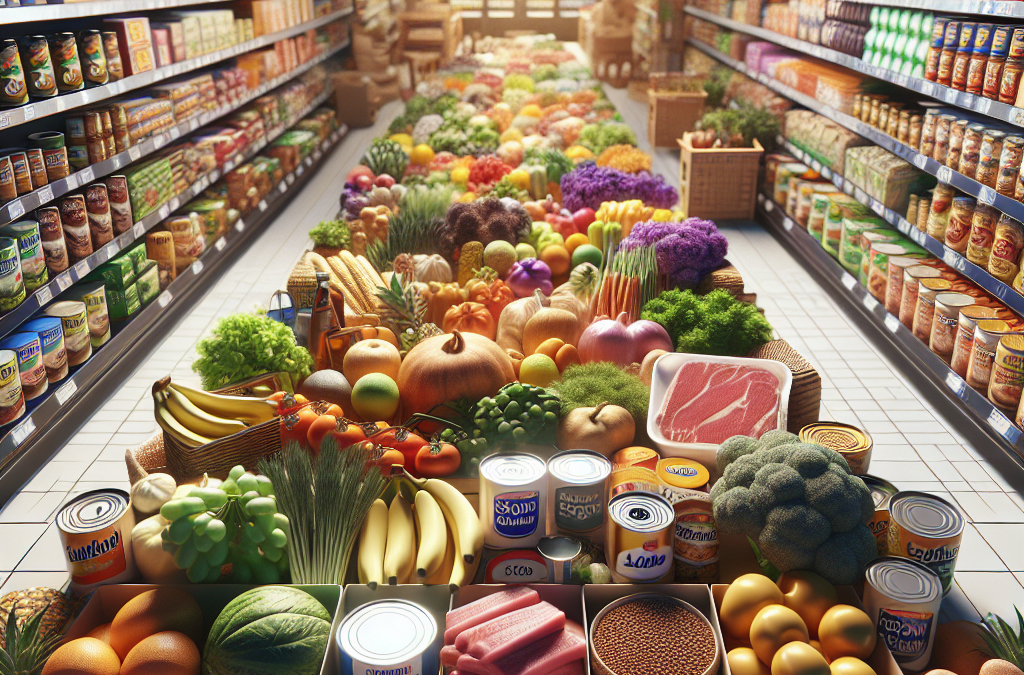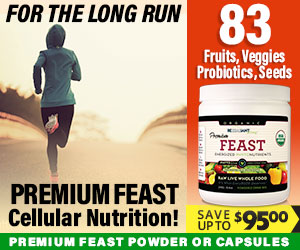1. Fresh Fruits and Vegetables
Choosing the Right Options
Let me tell you, when you embark on a low-sodium diet, you’ll find an array of fresh fruits and vegetables are your best pals. From crisp apples to juicy tomatoes, these goodies come with that sweet, juicy crunch while being low in sodium. Think bright colors and rich flavors; they’re not just beautiful to look at but also exceptionally good for you.
What I truly love about fruits and veggies is their versatility. You can toss them in salads, whip them up in smoothies, or just snack on them raw. It’s about making your plate pop with deliciousness while keeping your sodium intake in check. Go crazy with leafy greens, colorful peppers, and sweet berries—they’re all super low in sodium!
And guess what? With the growing trend in farmers’ markets, finding these fresh options is easier than ever. Nothing beats munching on something picked right from the garden. It’s amazing to think I can eat all this good stuff without worrying about salt!
Preparation Tips
Now, how you prepare these fresh foods really makes a difference. I’ve learned that simple is often best. Steaming veggies or enjoying them raw maintains their nutrients while keeping them low in sodium. I’ve ditched the sauces for spices and fresh herbs, and honestly, it’s a game changer for flavor.
For example, instead of dousing my veggies in a store-bought sauce, I’ll sprinkle some garlic powder, pepper, or even a squeeze of lemon juice. The freshness of herbs like basil or cilantro really adds that punch without the need for extra salt. Cooking is all about making these organic flavors shine!
Oh, and don’t forget about frozen fruits and veggies, too! They’re super convenient and can be just as nutritious. Just check the labels to make sure there aren’t any added salts or sauces. Can’t get enough of this healthy goodness!
Health Benefits
Incorporating lots of fresh fruits and vegetables into my diet has had noticeable impacts on my health. First off, they’re packed with vitamins and minerals that support overall wellness. I feel energized and vibrant after munching on these beauties.
Plus, they’re loaded with fiber, which is fantastic for digestion. I’ve noticed that my tummy feels way better! That feeling of fullness without the heaviness of high-sodium processed foods is such a win. It’s all about feeling good from the inside out.
And let’s be real, eating this way has helped me manage my blood pressure too. Keeping sodium low while loading up on potassium-rich foods, like bananas and spinach, has been key. It’s like a little happy dance every time I choose fresh produce—my body thanks me for it!
2. Whole Grains
Understanding Whole Grains
Whole grains are another fantastic addition to a low-sodium diet. Unlike those processed white grains, whole grains like brown rice, quinoa, and whole wheat are where it’s at. These grains provide more nutrients, fiber, and, most importantly, they’re usually low in sodium!
When I started switching to whole grains, I enjoyed experimenting with new recipes. Quinoa bowls have become a household favorite! Toss in some veggies, a protein, and drizzle a little olive oil, and boom—dinner is served!
One thing I’ve learned through my food journey is that whole grains can feel hearty and satisfying. They help maintain my energy levels, which is essential for my busy days. So, let’s ditch the bleached stuff and embrace the grain goodness!
Cooking Techniques
Cooking whole grains doesn’t have to be daunting. I’ve figured out that soaking them ahead of time helps to cook them faster and also makes them more digestible. For instance, I usually soak my lentils or beans overnight, and when ready to cook, they come out perfect and soft.
When I’m in a pinch, I often reach for a rice cooker or instant pot. These handy gadgets make cooking grains super easy and quick—just set it and forget it until it’s done! This way, I always have delicious, fluffy grains ready to complement my meals.
Also, add spices while cooking. A bit of cumin or turmeric can change the whole flavor profile of your dishes. Instead of loading up on salt, bringing in spices really elevates your cooking game. Your taste buds will thank you!
Benefits of Whole Grains
Eating whole grains has opened my eyes to better digestion and sustained energy. The fiber content is incredible, keeping me full longer and helping with my gut health. It’s amazing how something so simple can have such profound effects!
Not to mention, switching to these grains has helped with my heart health. Data shows that whole grains can reduce the risk of heart disease, and who wouldn’t want to support their ticker? Every bite feels like a step towards maintaining a healthy lifestyle!
Plus, whole grains are super versatile! I swap them into my meals and can even make desserts with them. It’s a fun way to get creative in the kitchen while staying within my low-sodium goals.
3. Lean Protein Sources
Types of Lean Proteins
When it comes to protein, lean options are key to a low-sodium diet. I focus on incorporating items like genuine chicken breast, turkey, fish, and legumes. These not only help me stay full but they’re also low in sodium compared to processed meats.
Fish, especially fatty types like salmon and mackerel, come packed with omega-3 fatty acids—good for my heart. Grilling or baking them instead of frying has been my go-to technique. It’s simple, and they stay moist and flavorful!
Legumes like lentils and chickpeas have become staples in my household. They’re packed with protein and nutrients. Plus, they can be whipped into soups, salads, or even hummus. Seriously, who knew sticking to low sodium could be so delicious?
Cooking Methods
When cooking lean proteins, I love keeping things healthy and easy. Grilling, baking, or steaming are my preferred methods since they add minimal extra calories or sodium. Honestly, there’s something satisfying about cooked chicken fresh off the grill.
Using marinades can also give your proteins a flavor boost. I like using herbs and citrus juice instead of salt to keep my food flavorful. A dash of black pepper or some garlic powder works wonders, too!
For those busy days, one-pot meals featuring lean proteins and tons of veggies have been lifesavers. It’s a compact way to get lots of flavors with minimal effort. Plus, leftover servings make for a quick grab-and-go option!
Health Impact
Incorporating lean proteins has been a game-changer for my diet. It’s helped me maintain muscle mass while being cautious about fats. I’ve noticed my energy levels are more stable throughout the day, leaving me full yet light-feeling.
Get an Amazing Discount on the Best Certified Organic Whole Food Supplement!
Additionally, it’s great knowing I’m fueling my body with quality nutrients. Lean proteins help repair tissues and are essential for overall bodily functions. It’s about treating my body well, right?
Emotionally, I feel empowered choosing foods that support my health goals. It makes each meal a celebration of mindful eating rather than a chore, which is what we all want at the end of the day!
4. Healthy Fats
Identifying Healthy Fats
Let’s talk about fats! Not all fats are villains—in fact, healthy fats are essential in a balanced diet. I’m talking about avocados, nuts, seeds, and olive oil. They provide flavor while delivering health benefits without having added sodium.
Avocados have become my go-to. Whether I’m tossing them in salads or making guacamole, they are so creamy and delicious. Plus, who can resist that vibrant green color? It’s healthy fat heaven!
Nuts and seeds are also great options. Whether I’m snacking on almonds or tossing flaxseeds in my smoothies, I gain a crunchy texture with tons of nutrients. I always keep a stash on hand for a quick boost between meals.
Cooking with Healthy Fats
Using healthy fats in cooking has made my meals richer and more satisfying. I enjoy drizzling olive oil over roasted veggies; it creates that perfect balance. The key is to use them wisely and not to overdo it. A little goes a long way!
Instead of butter, I often use avocado oil for cooking. It adds a similar mouthfeel while being lower in saturated fats. I’ve found that it works wonderfully in various dishes without overpowering the flavor!
Mixing different fats can elevate simple dishes. For instance, combining olive oil with balsamic vinegar creates a yummy salad dressing That’s delicious without the added sodium. It’s all in the little touches!
Benefits of Healthy Fats
Adding healthy fats into my diet has made such a noticeable difference! They keep me feeling full longer, which stops me from snacking on unhealthy options. Plus, they’re fantastic for brain health, and who doesn’t want a sharp mind?
What’s more, these fats help with the absorption of important vitamins like A, D, E, and K. So each meal becomes a powerhouse of nutrients—every bite counts! It’s like they’re working double-time for my body.
Overall, feeling satisfied while being healthy makes every meal enjoyable. I don’t feel guilty indulging in good fats. Instead, I celebrate knowing they’re doing good things for my body and mind!
5. Low-Sodium Snacks
Finding Healthy Snacking Options
Snacking can often be a bit of a challenge on a low-sodium diet, but it’s not impossible! I’ve learned to choose snacks that are both satisfying and good for my health. Fresh fruit, veggie sticks, and unsalted nuts have become my go-to options. They keep my energy levels up without any extra sodium!
When I feel like something crunchier, I look for air-popped popcorn without added salt. Add a sprinkle of nutritional yeast, and it becomes this delicious, cheesy-tasting snack that fits my low-sodium needs. It’s all about swapping out those common salty favorites for healthier options!
Moreover, I try to plan my snacks ahead of time. Prepping bags of carrot sticks or fruit cups makes it easy to reach for something nutritious rather than junky snacks. Trust me, being prepared is key!
Homemade Treats
Instead of buying pre-packaged snacks, I have plenty of fun making my own! I’ve experimented with energy bites using oats, nut butter, and a touch of honey. They’re easy to whip up and keep well in the fridge for a quick bite anytime.
I’ve also delved into making my own trail mix, mixing unsalted nuts, dried fruits, and dark chocolate chips. This way, I control the ingredients while getting that satisfying sweet and salty combo without the usual sodium overload found in store-bought alternatives.
Experimenting with these homemade treats has turned snacking into a totally enjoyable experience. I get to express my creativity and satisfy my cravings the healthy way!
Health Impacts of Snacking Wisely
Choosing low-sodium snacks has had a positive ripple effect on my lifestyle. I find myself feeling more energetic without the usual sodium-induced sluggishness that comes from typical snack foods. It’s incredible how good tactical snacking can make me feel!
Moreover, these smarter snacking choices reduce my risk of health issues related to high sodium. It’s satisfying knowing I’m making choices that fuel my body and don’t compromise my health. Each snack is an opportunity to nourish myself rather than fill up on empty calories!
In the end, shifting my snacking habits makes me feel proactive about my health journey. It’s like I have a secret weapon to stay on track, no matter what life throws at me. Plus, every healthy choice I’ve made feels rewarding!
FAQs
1. What are the main benefits of a low-sodium diet?
A low-sodium diet can help reduce blood pressure, lower the risk of heart disease, and support overall health. It also encourages the intake of fresh, unprocessed foods, which are packed with essential nutrients.
2. Can I still enjoy snacks on a low-sodium diet?
Absolutely! Focus on low-sodium snacks like fresh fruits, veggie sticks, air-popped popcorn, or homemade treats to keep your cravings satisfied without the extra salt.
3. Are all whole grains low in sodium?
Yes! Most whole grains like brown rice, quinoa, and oats are naturally low in sodium. Just be cautious of packaged grains as some may have added seasoning or sodium.
4. How can I add flavor without salt?
You can amp up flavor using herbs, spices, citrus juice, and vinegar. Experimenting with these ingredients can create delicious dishes without the need for added salt.
5. Is it challenging to switch to a low-sodium diet?
With the right resources and mindset, it can be quite manageable! Focus on gradually incorporating more fresh, whole foods into your meals and make the transition enjoyable.




